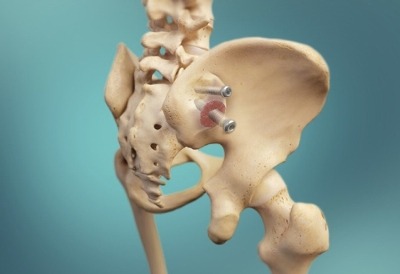
Zyga Technology has released 24-month computed tomography (CT) fusion and clinical results for its SImmetry sacroiliac joint fusion system. This prospective, multicentre study evaluated long-term fusion and pain reduction in patients receiving the system.
The study evaluated 18 patients for radiographic evidence of fusion at 12 and 24 months following SI joint fusion with decortication and bone grafting. A systematic CT review was predefined and performed by independent radiologists blinded to each other’s assessments. Fusion was defined as solid (presence of solid continuous bridging bone across the treated joint), possible (presence of possible continuous bridging bone across the treated joint), or no fusion (no bridging bone).
Previously-reported results demonstrated that 79% of patients had evidence of bridging bone at 12 months. At 24 months post operation 94% of patients had evidence of bridging bone, with 83% categorised as solid fusion across the joint. Of patients with solid fusion, 88% of the joints were fused within the area of decortication, demonstrating the importance of this step in achieving fusion.
In addition to fusion, the study demonstrated a 73% reduction in average pain at 24 months, maintaining the significant pain relief reported at earlier time points. There were no procedure- or device-related serious adverse events reported.
“Evidence is continually building to support sacroiliac joint fixation’s ability to effectively reduce pain in patients with sacroiliac joint disorders,” says William W Cross III, an orthopaedic surgeon specialising in pelvic disorders from the Mayo Clinic in Rochester, USA, who presented the data at the International Society for the Advancement of Spine Surgery annual meeting (ISASS17; 12–14 April, Boca Raton, USA). “This study demonstrates the ability of the SImmetry system to achieve pain reduction comparable to other systems, while providing radiographically evident fusion as early as 12 months, and increased fusion rates at 24 months. By supplementing fixation with decortication and bone grafting, I can be confident that my patients have the best possible foundation for biological fusion, and long-term relief.”













